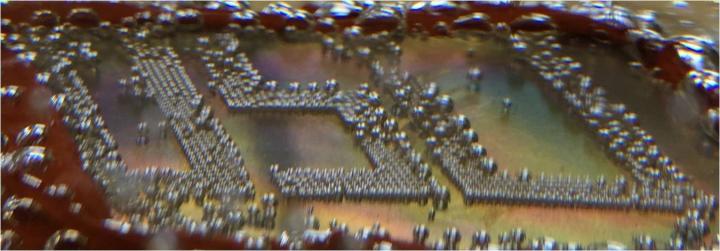Oregon State University engineers have figured out a way of using industrial, electronics applications to improve the art of boiling water.
The benefits to this improvement could be two-fold: boiled water or steam can be created more readily, and an electronics device can more efficiently release heat for the purpose of operating at a cooler temperature.
 A demonstration of the solution spells out the university's acronym using precisely-controlled bubbles.
A demonstration of the solution spells out the university's acronym using precisely-controlled bubbles.
“One of the key limitations for electronic devices is the heat they generate, and something that helps dissipate that heat will help them operate at faster speeds and prevent failure,” said Chih-hung Chang, a professor of electrical engineering in the OSU College of Engineering. “The more bubbles you can generate, the more cooling you can achieve.
“On the other hand, if you want to create steam at a lower surface temperature, this approach should be very useful in boilers and improve their efficiency. We've already shown that it can be done on large surfaces and should be able to scale up in size to commercial use.”
The solution is based on the use of a piezoelectric inkjet printer to create hydrophobic polymer “dots” on a substrate, which then have a hydrophilic zinc oxide nanostructure placed atop it. The latter layer only grows in the area without dots—so, by controlling both the hydrophobic and hydrophilic structure of the material, bubble formation is more precisely controlled, and better manipulated, to meet a desired goal.
What it allows for is researchers can now control both the boiling and condensation processes; additionally, the spatial bubble nucleation sites, bubble onset and departure frequency, heat transfer coefficient, and heat flux, are all more manageable for the first time.
In terms of electronics, the team says this technology will likely be applied to solar energy solutions, advanced lasers, radars, and power electronics — basically, anywhere that it’s necessary to dissipate high heat levels. Industrially speaking, it will likely be applied as a means for more efficient operation of the steam boilers used to produce electricity in large electric generating facilities.
Advertisement
Learn more about Electronic Products Magazine





